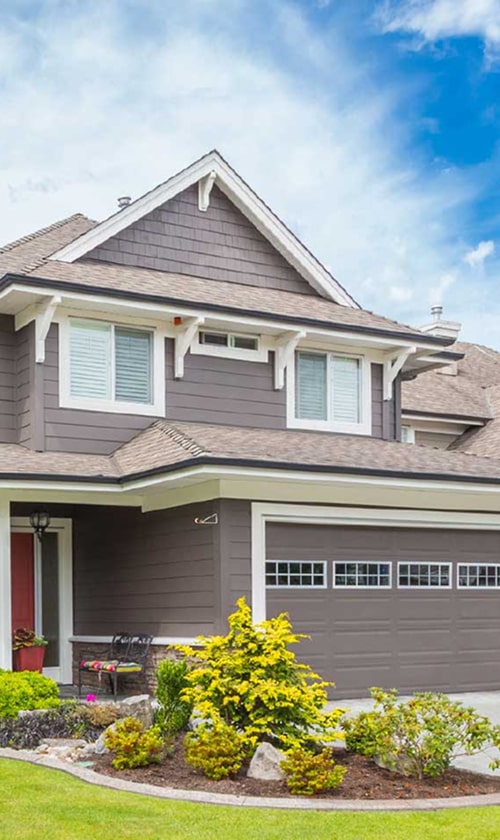Smart thermostats can make our air conditioning systems work better and help us save money. By integrating a smart thermostat with our AC, we get more control over the temperature in our homes and can use less energy. This is a simple step with real benefits.
Many smart thermostats let us set schedules, change settings from our phones, and even learn our habits over time. These features can help us stay comfortable while lowering our monthly bills. It’s easier than ever to upgrade, and the results are easy to see.
Key Benefits of Integrating Smart Thermostats with Air Conditioning Systems

Smart thermostats help us use less energy, lower our utility bills, and control the temperature in our homes more easily. They also support better management of our home’s heating and cooling while reducing our overall impact on the environment.
Enhanced Energy Efficiency and Cost Savings
When we use a smart thermostat, we can program temperature schedules that fit our routines. This means our air conditioning system does not run when we don’t need it. Most smart thermostats also learn our habits over time and make automatic adjustments to maximize comfort and minimize energy use.
Some models connect to Wi-Fi, letting us control settings remotely through a phone app. This helps us adjust the temperature if our plans change. Detailed energy reports show us when and how much energy we use, making it easier to find ways to save.
According to the U.S. Department of Energy, smart thermostats can reduce heating and cooling costs by up to 10%. By tracking patterns and turning off systems when we’re away, we avoid wasting energy and save money every month.
| Smart Feature | How It Saves Energy |
|---|---|
| Auto Scheduling | Prevents overuse |
| Remote Control | Reduces waste |
| Usage Reports | Identifies savings |
Convenient Home Climate Control
Smart thermostats let us control our home’s temperature with just a few taps on our phones or voice commands. This is especially helpful in larger homes or when we are outside. We do not have to get up to make changes for comfort.
We can set different temperatures for day and night, or for different rooms if our system allows zoning. Many smart thermostats provide reminders for air filter changes or system maintenance, so our air conditioning works more efficiently and lasts longer.
Some systems also use sensors to detect if someone is at home. They can automatically adjust heating and cooling based on occupancy. This increases comfort and reduces the chances of wasting energy cooling an empty house.
Environmental Sustainability Advantages
By using less energy for heating and cooling, we help reduce fossil fuel use. This means we lower our home’s carbon footprint. Many utility companies offer rebates for installing smart thermostats because they help meet energy-saving goals.
Smart thermostats often integrate with larger smart home energy management systems. This helps us shift energy usage to off-peak times, reducing strain on the grid and helping prevent blackouts.
We support environmental sustainability by choosing energy-efficient devices. Over time, broad use of smart thermostats can make a real difference in lowering residential energy consumption and greenhouse gas emissions.
Smart Features and Compatibility Considerations

Smart thermostats are more than digital controls. With machine learning, remote access, and automation, these devices can manage our air conditioning for better comfort, savings, and convenience.
Core Smart Thermostat Functionalities
Most smart thermostats offer learning algorithms that adjust temperatures based on our usual habits. These systems gather real-time data about our usage, so they can start cooling or heating our home before we ask them.
Some models give us detailed usage reports. We can look at past energy use, find patterns, and make better choices about our schedules.
| Feature | Benefit |
|---|---|
| Learning Algorithms | Predicts and adapts to routines |
| Usage Reports | Tracks energy use |
| Real-Time Data | Gives live feedback |
Before buying, we must check if the thermostat works with our HVAC system. Some older systems may need extra wiring or adapters.
Remote Access and Voice Control Integration
With remote access, we can change our thermostat settings from anywhere using a smartphone app or computer. This helps if we forget to change the temperature before leaving home.
Many smart thermostats work with smart home assistants like Google Assistant and Amazon Alexa. Voice control lets us adjust the temperature with simple spoken commands.
This integration makes it easy to include climate control in our daily routines. We can set up routines, like turning on the air conditioning when we say “I’m home.”
Geofencing and Automation Capabilities
Geofencing uses our smartphone’s location to control heating and cooling. When we leave a set area, the thermostat can turn the system down to save energy.
When we come back, the thermostat can start cooling or heating so the house feels comfortable on arrival. This is helpful for busy schedules or families on the go.
Automation options include setting up schedules, pairing with other smart devices, and even linking to weather forecasts for better comfort. All these features make sure our air conditioning is only working when needed.
Integration Strategies and Smart Home Connectivity
Smart thermostats can help us get more out of our HVAC systems and home automation tools. By connecting these devices with other smart home technology, we can control heating, cooling, air quality, and room comfort more easily.
HVAC System Compatibility and Smart HVAC Integration
First, we need to check if our current HVAC systems are compatible with smart thermostats. Most smart thermostats work with common heating and cooling systems, such as those with 24V controls. However, some older or high-voltage units may need special adapters or may not work at all.
When planning smart HVAC integration, it’s important to look for wiring requirements like a C-wire. A C-wire provides power to the thermostat, which many smart models need. If our system lacks this, there are kit options or we can ask a pro for help.
Some newer smart thermostats also support advanced functions like two-stage cooling, variable speed fans, or heat pumps. Matching features between our thermostat and HVAC system helps us use energy more wisely and get the most comfort.
Tip:
| HVAC Feature | Smart Thermostat Support |
|---|---|
| Single/Multi Stage | Most modern models |
| Heat Pump Compatible | Many models (check support) |
| Zoning Systems | Some, but not all |
| C-wire Needed | Usually yes |
Connecting with Smart Home Devices and Platforms
Connecting our smart thermostat to other smart home devices builds a stronger, more flexible system. Many leading thermostats work with platforms like Amazon Alexa, Google Home, and Apple HomeKit. This lets us control temperature with voice commands, phones, or even automatic routines.
Using these connections, we can set schedules or let our thermostat change settings when we leave home. It’s easy to link the thermostat to other devices, such as smart sensors, motion detectors, or door locks, for better energy use and safety.
Integration also means we can group the thermostat with lights, blinds, or fans, helping to balance comfort. Some systems offer IFTTT support, so we can create custom rules for even more control.
Popular Smart Home Integrations:
- Voice Assistants (Alexa, Google Assistant, Siri)
- Mobile apps with remote access
- Routines based on location or schedules
- Triggers from doors, motion, or window sensors
Optimizing Air Quality and Zoning Systems
With smart thermostats, we can do more than just control temperature we can also manage air quality and zoning. Many smart HVAC systems support devices like air purifiers, ERVs (Energy Recovery Ventilators), and humidifiers, allowing them to work together based on need and air quality levels.
Zoning systems split our home into different areas, each with its own settings. This means we can cool or heat only certain rooms, saving energy where it’s not needed. Smart thermostats let us oversee multiple zones from one place.
Some models track air quality data and trigger air purifiers or ventilation automatically. If we need deeper control, adding air quality sensors or connecting with home automation platforms helps us keep the air fresh and healthy.
Key Features for Clean Air and Comfort:
- Automated air purifier and ERV operation
- Multiple zone temperature control (HVAC zoning)
- Data-driven alerts for air quality and filter status




